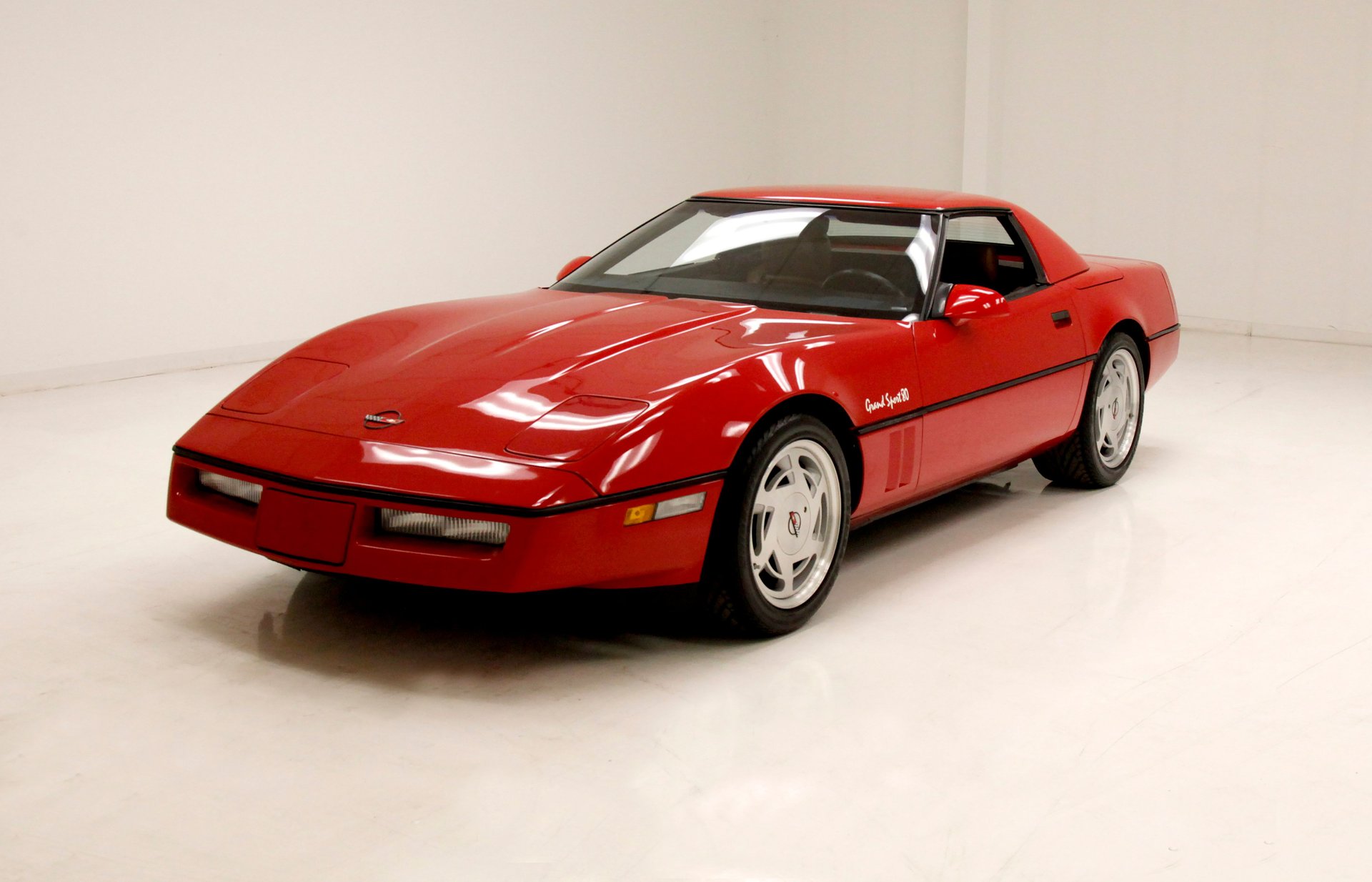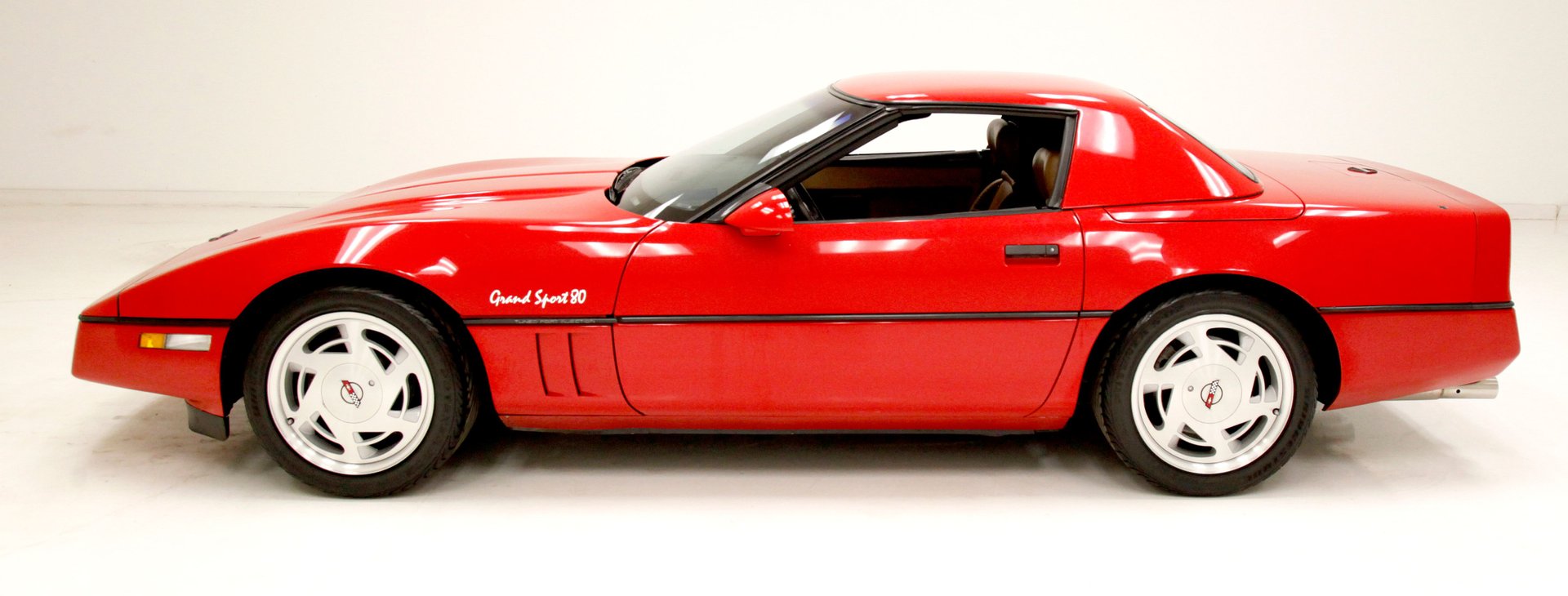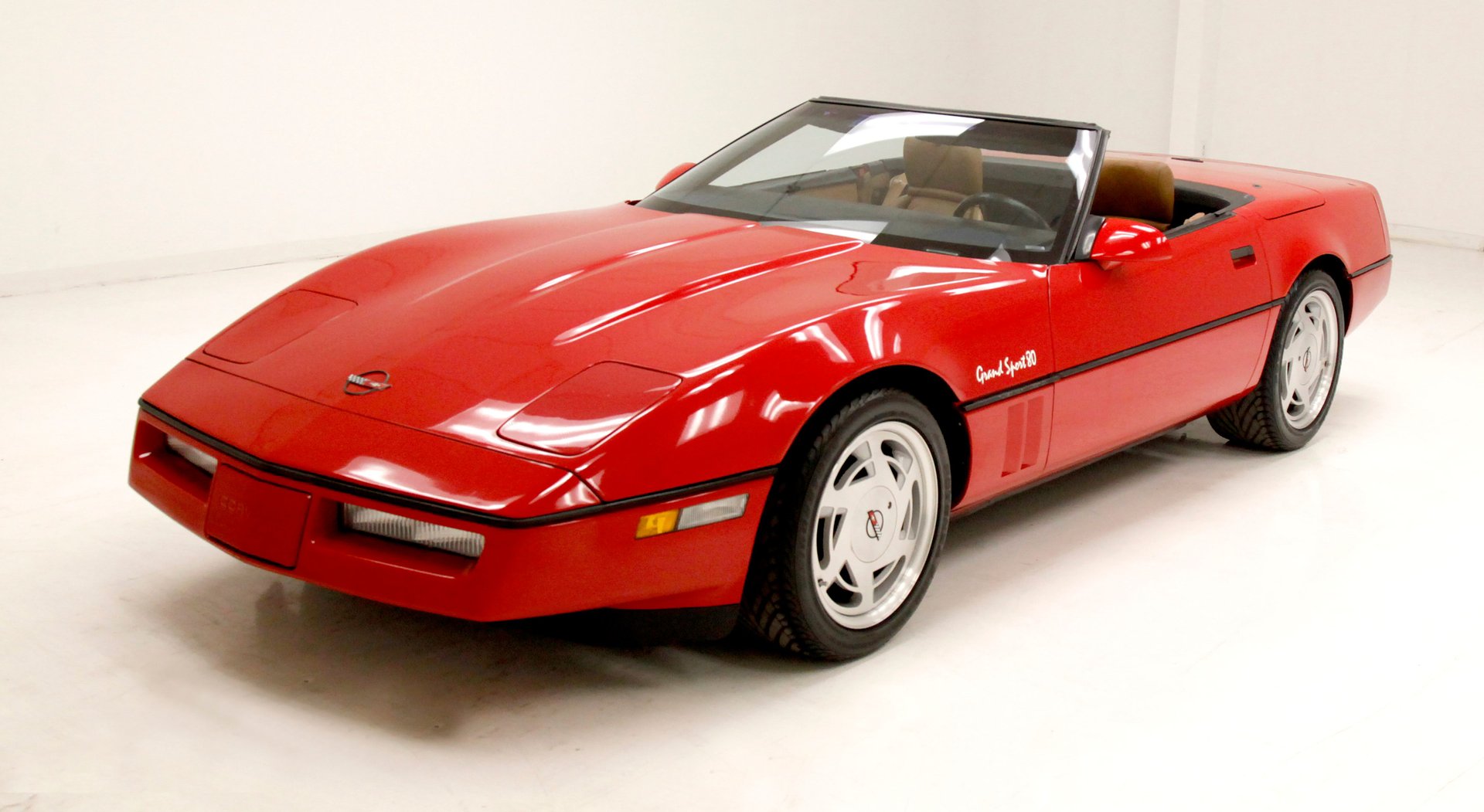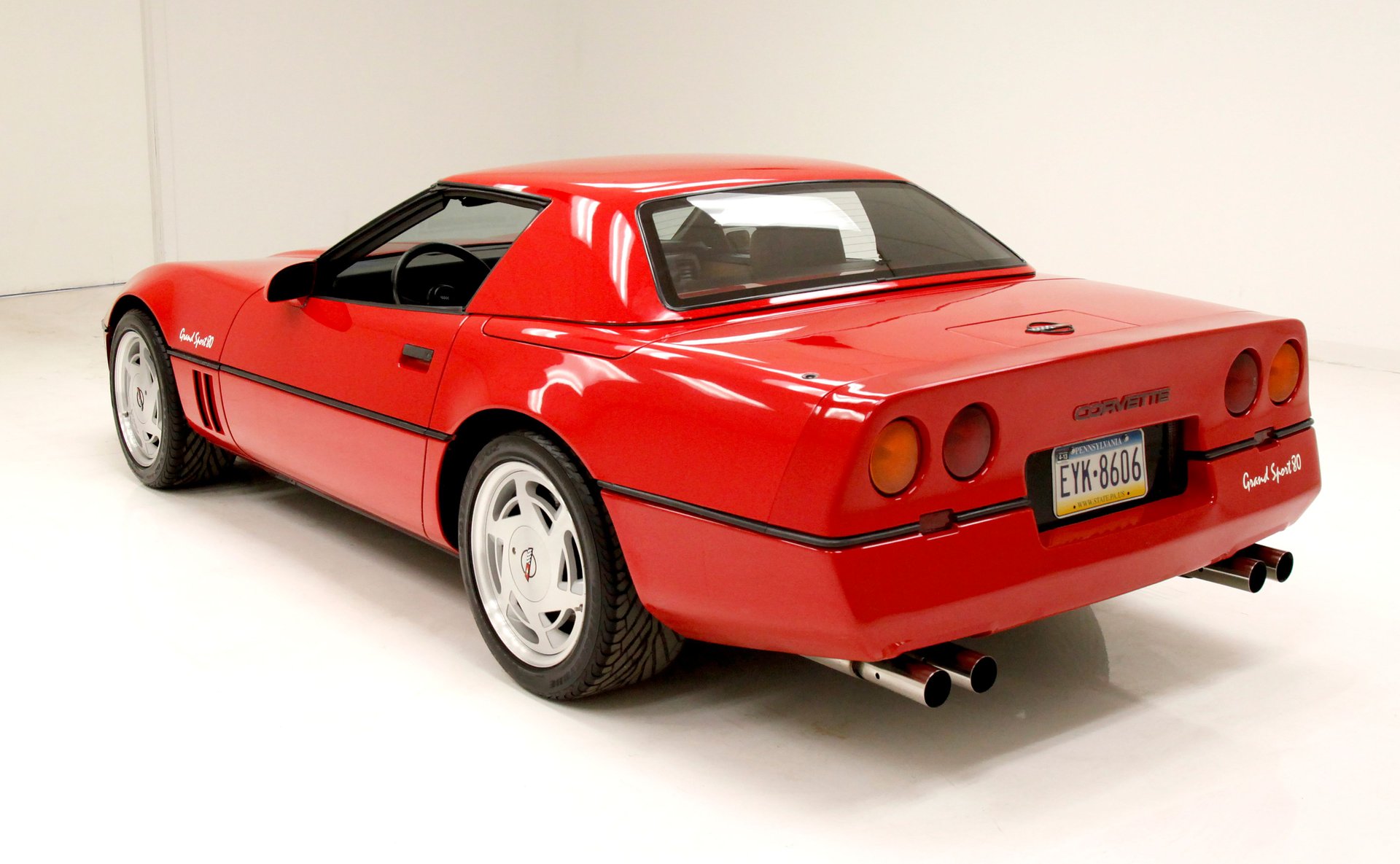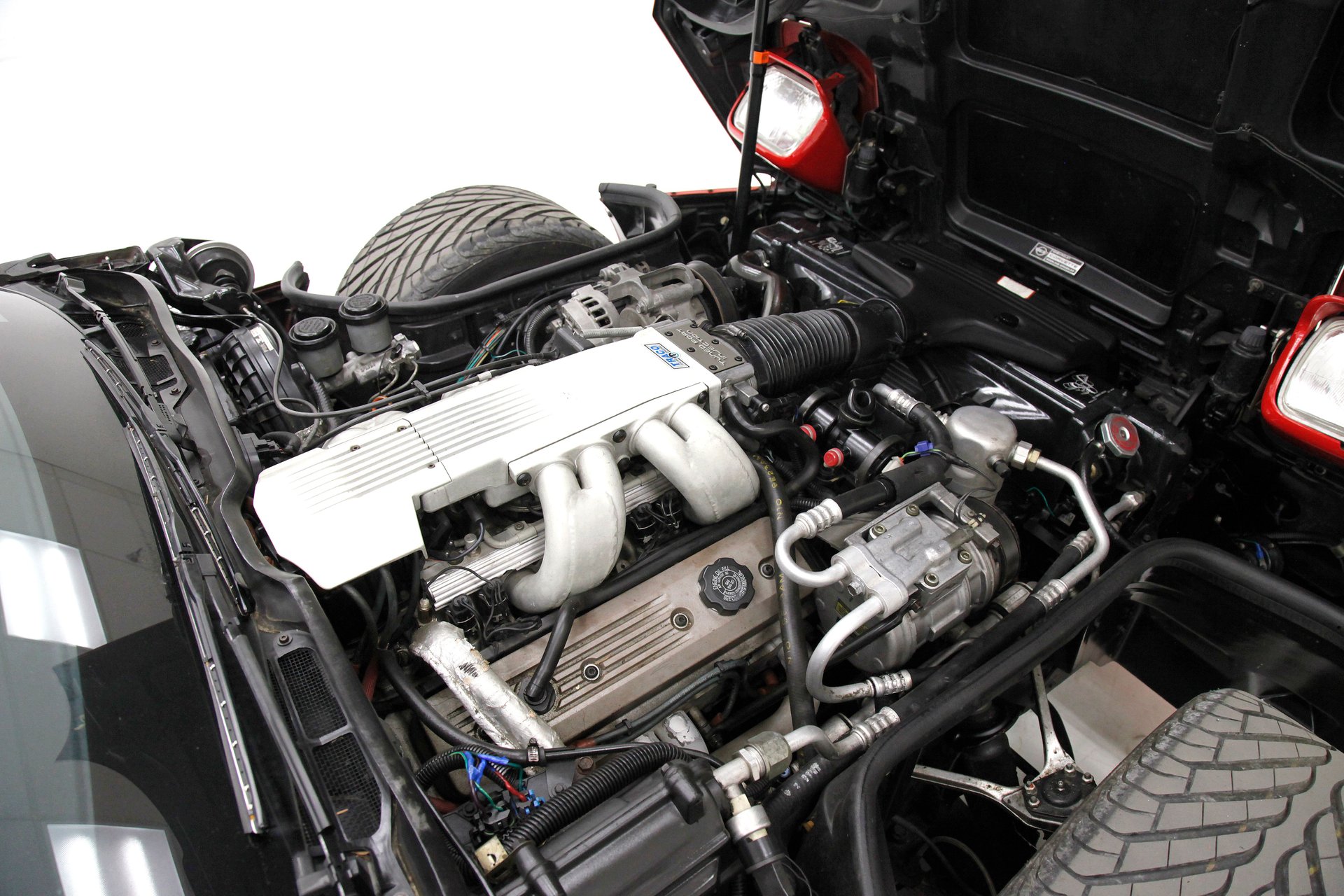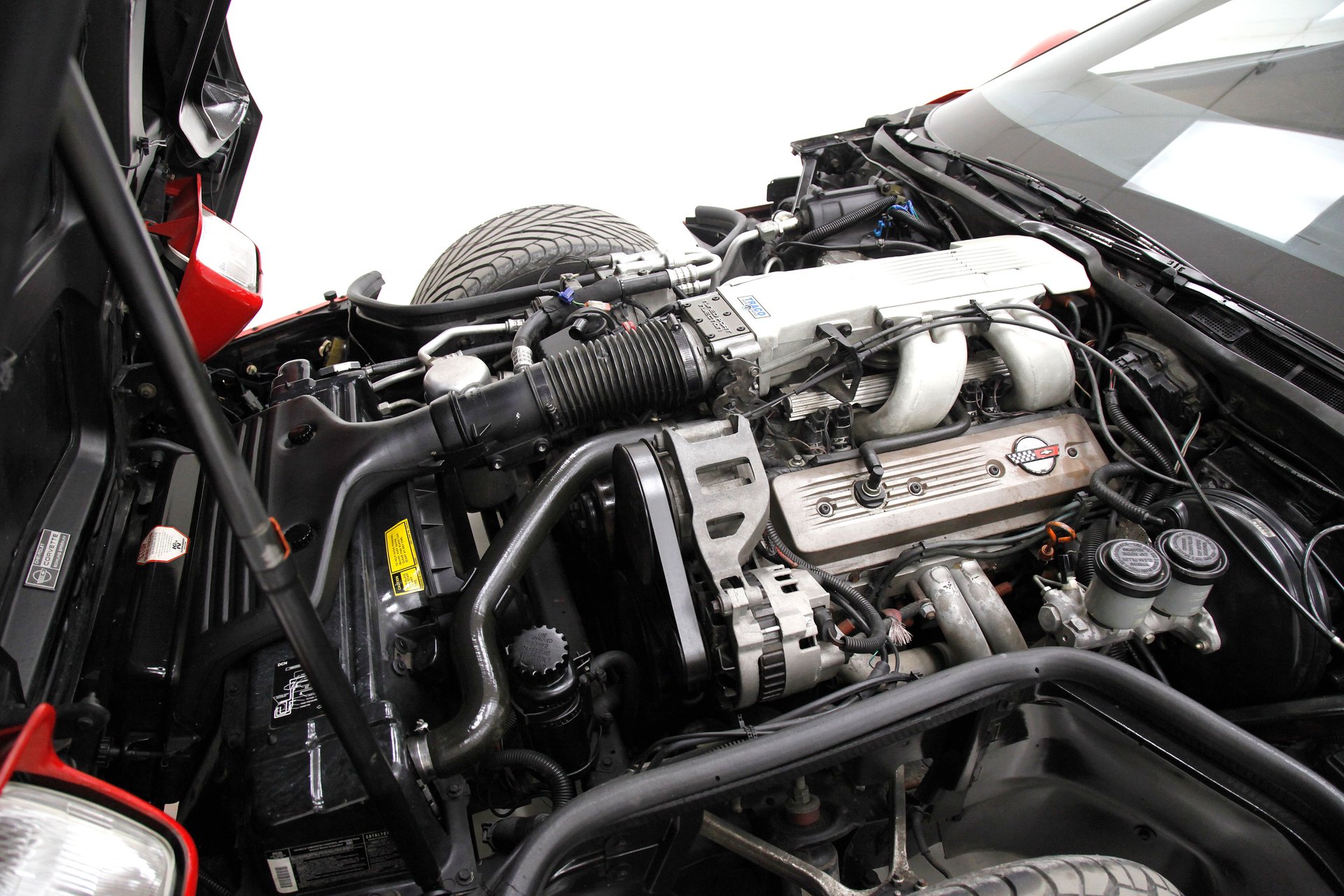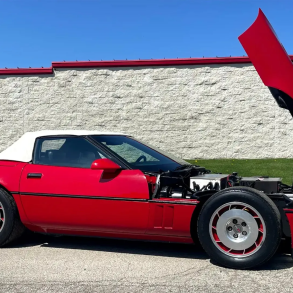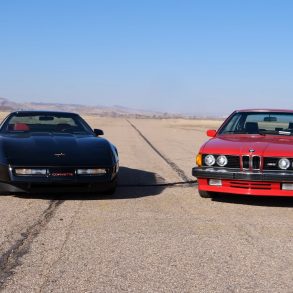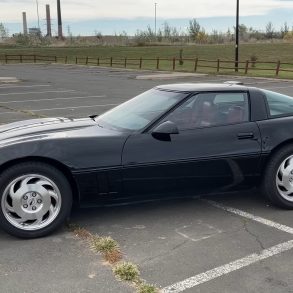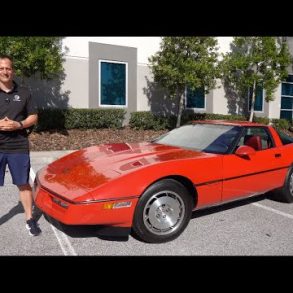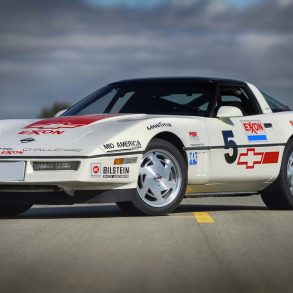Guldstrand Grand Sport 80 (GS80)
When Dick Guldstrand introduced the GS80 series in 1986, the car was targeted specifically at Pro-Solo and autocross enthusiasts. He knew all about the needs of these groups, as he was a longtime provider of performance upgrades for the C3 and a direct supporter of a small team of racers from the Western Council of Corvette Clubs. Up to this point, Dick had basically been a tuner. But with the introduction of the GS80, he was venturing into the realm of small-volume manufacturing-tricky territory in both the business and regulatory contexts.
Effective suspension improvements were critical to the performance of the new C4. Despite being light-years ahead of the C3 design, the C4 had some inherent weaknesses. For example, it was susceptible to even the smallest of variations in suspension calibration. As little as 11/48 degree of camber or 11/432 of toe setting could make a noticeable difference.
Developed and refined over a two-year period, the Guldstrand GS-80 suspension package (hyphen added) proved an effective upgrade. Guldstrand lowered the car by 111/44 inches using longer rear spring bolts and revised spring rates in both the front and rear. The choice for the front was the stiffer Z51 spring, while the rear spring received a lower-than-stock rate.
In most cases, the GS-80 setup used roller-bearing bushings in the control arms. These have less resistance than conventional rubber or polyurethane bushings, resulting in a faster response from the suspension, with less “stiction.” These bearings also give zero deflection-just like steel bushings, but without the attendant squeaks and ride harshness.
The end results of Guldstrand’s suspension magic were reduced squat and dive along with better camber and toe control. The ride remained comfortable and maintained excellent compliance for street driving.
The engines for the GS80 cars were built by Jim Jones of TRACO, which was just next door to the Guldstrand facility in Culver City (see sidebar). Apart from a few unusual variants, there were three basic stages in the evolution of the powertrain. The initial engine was based on a seasoned L98 block, which was blueprinted and overbored to 372 cubic inches. The bottom end comprises stock LT-1 pieces. It included a forged crank, “pink” connecting rods, and TRW 9:1 aluminum pistons (later engines used 10:1 pistons). An Engle cam was employed, and a choice of either iron or aluminum heads was offered. The iron heads were from the L82 engine but used 2.02-inch intake and 1.65-inch exhaust valves. TRACO port-matched and “cc’d” these heads as part of the overall blueprinting process. When the aluminum Corvette heads came into production, TRACO upgraded them by performing a major port job and installing the larger valves from the iron version.
Other changes included intake runners that were siamesed and port-matched to the manifold. TRACO also built its own custom headers, which led to a 211/42-inch exhaust system. The cars were available in both manual and automatic versions, and each one came with an application-specific custom PROM. As a finishing touch, each owner’s name was imprinted on the engine-stamp pad.
The first series of powerplants used a hydraulic camshaft. Unfortunately, one of these engines exhibited serious oiling problems while being tested by Road & Track magazine. To prevent similar issues in the future, the second series was modified with a solid-lifter cam and roller rockers. The third version of the engine used similar components but displaced 383 cid. Horsepower ratings varied over the years (375 seems to be the most commonly cited figure), but in general, the TRACO engines would make power all the way up to 5,500 rpm, much higher than the stocker’s 4,000-rpm limit. Peak torque for the iron-head version was 421 lb-ft, while the aluminum-head engines made 430 lb-ft.
The GS80 cars were also fitted with a removable 2-inch rollbar. Although the initial installation took about a week in the shop, once in place, the bar could be removed or replaced in about 10 minutes. This four-point unit is acceptable for most Solo-type events, but the cars had to be fitted with a diagonal support for SCCA competition.

